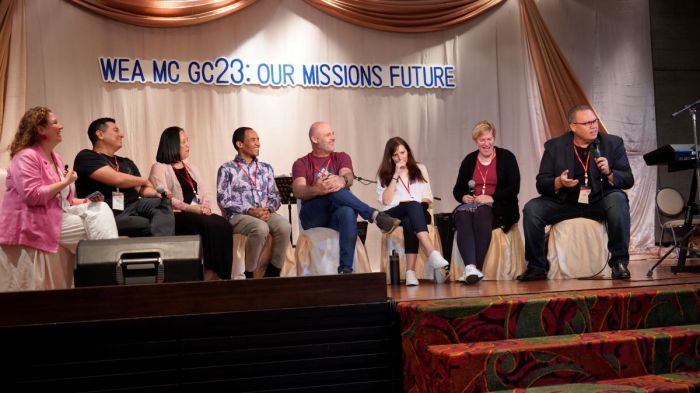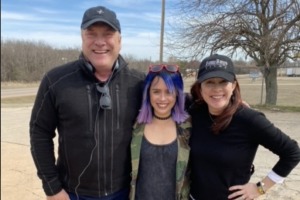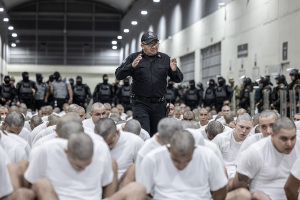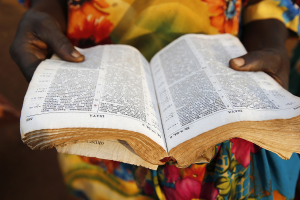Emerging trends shaping the future of global Evangelical missions (pt. 1)

Editor's note: In Part 1 of this article series, we will take a look at the emergence of local leaders in the mission field.
Two emerging trends in global missions stood out as nearly 15 dozen mission leaders from across the globe gathered for a consultation earlier this month in Thailand: more local leaders and more females serving in the mission field.
The World Evangelical Alliance's Mission Commission (WEA MC) brought 172 missions leaders together for a global consultation in Chiang Mai to discuss "Our Missions Future" from Jan. 30 to Feb. 3. The 15th Global Consultation (GC23) was the first in-person gathering after the pandemic, drawing leaders of international and national missions agencies and networks from 33 different countries.
"Local believers have taken responsibility for spreading the Gospel in indigenous forms and whole-of-life ways," commented Dr. Jay Mātenga, executive director of the WEA MC, who took over the mantel just before COVID-19 hit.
"And the Gospel is spreading rapidly in places previously thought to be resistant because of these localized and holistic expressions of faith in Jesus."
He added that "as testimonies of integral mission undertaken by local believers in places where the Gospel is least represented started [becoming] more noticeable during the pandemic, the importance of local control of missions activity came into stark focus."
The GC23 participants' make-up reflected some of the shifts seen in the mission field: more than 50% were from the non-Western world, some 30% were women, younger leaders in their 30s and 40s, and about half of the entire group attended the WEA MC consultation for the first time.
Effective and long-lasting growth takes place with indigenous leadership

In the lead-up to the consultation, Mātenga wrote that "we see that expatriate (outsider) initiatives can be wonderful catalysts for Gospel growth, but historic investigations and contemporary research data show that it is an indigenous (local) church that spreads most effectively and remains over time and indigenous theology that sustains and matures new movements to Christ, especially in contexts of persecution."
One illustration of this new dynamic has become evident in India. While thousands of missionaries have been sent to India from other countries, tens of thousands of local missionaries from within India are spreading the Gospel in their own nation.
While recognizing the important historic and contemporary role of cross-cultural missions, some national leaders lament that missions that do not cross geopolitical borders do not receive the same recognition.
Speaking on the topic of "Nationals in Mission," Dr. Bijoy Koshy, international director of Interserve, expressed his conviction that for "long-term transformational missions, there is no other way in the future, except to leave missions in the hands of nationals."
Most of the cross-cultural mission work is confined to easy-access, urban areas and big towns, while there are now effective indigenous movements going to the hardest-to-reach places in nations.
"If you want to do cutting edge pioneering mission, we talk about the so-called 'unreached people groups,' but the majority of them are all in places where we cannot actually get to as foreigners. If you want to do cutting-edge pioneering missions, nationals are the ones who will do it for you," he said.
The Rev. Dr. Isac Raja, general secretary of the India Missions Association, echoed the thought by sharing how God opened new ways to reach areas where no cross-cultural missionary can go. He pointed to places of severe persecution, where foreigners' entry is restricted. But internal migration has opened new opportunities for missions led by local churches prevalent in other parts of the country.
"We are challenging the churches to reach out to the migrants from those people groups without the Gospel and disciple them so that they will take the Gospel back to their own people," Raja said. "This way, we pray for entire nations to be saturated with the Gospel. That is the power of national missionaries that we are talking about today."
From outsider to alongsider: a paradigm shift in mission roles
Calls are increasing for a rethinking of the approach to foreign missions and the need to relinquish control to allow local leaders to take the lead. Several emerging models that put nationals at the center were presented at the consultation.
Craig Greenfield, president of Alongsiders and author of Subversive Mission, who has served slum communities in Cambodia for more than two decades, introduced what he believes to be a necessary paradigm shift in the understanding of the role of cross-cultural missionaries.
He emphasized that the tension between the roles of outsiders versus insiders is not an issue of either/or but rather both/and, yet with an awareness of the unique strengths that both outsider and insider bring.
"Because insiders have cultural knowledge that outsiders don't have; they're the ones who need to contextualize the Gospel. They're the ones that are going to carry on the ministry long after the outsiders have left. And so, the roles just simply need to be different," Greenfield argued.
The basic concept Greenfield offers is that of the outsider coming alongside the insider, not in a leading but a supportive role.
Looking at the five types of leaders in Ephesians 4, he introduced alternative roles or "hats" that the missionary could put on, which would help them understand how to apply their God-given gifting in the mission field in a way that would not inadvertently put themselves in the center.
"How do we reconcile the focus on local leadership and the fact that many of us outsiders are also gifted in those areas? What I want to suggest is that as outsiders, we slightly reframe, slightly reimagine what those five types are," Greenfield said.
He suggests that the pastor becomes the midwife, the teacher becomes the guide, the evangelist becomes the seeker, the apostle becomes the catalyst, and the prophet becomes the ally.
For the pastor, he said, "you put on a hat of a midwife. The role of the midwife is almost the same, yet different. The midwife is not the one giving birth but the one who comes alongside to help give birth."
The same is true for the other roles that shift the focus of the missionary onto the local leaders.
"Sometimes we've gotten that kind of mixed up. We haven't had a clarity that the role for insiders, indigenous nationals, local people, whatever you want to call them, is going to be different from the role of outsiders, ex-pats, missionaries, whatever you want to call it," he said.
About his own gifting type as an apostle, Greenfield said that as someone who naturally seeks to initiate and lead, he must exert self-control that he will allow the locals to take the initiative while he will come alongside as a catalyst who encourages and supports their efforts.
The results have been local leaders inspiring other believers to come forward and take initiative as they see that God used someone like them to bring change to people's lives and the wider community.
"[T]he story of missions has very often started out with the stories of martyrs who are outsiders. And we honor them, we celebrate them, we read their books," Greenfield said. "But I want to tell the story of insiders who also laid down their lives. I want the story to be about them. The limelight is to be off us and on local insiders from now on. That is what the future of missions is going to look like in the new era."





























